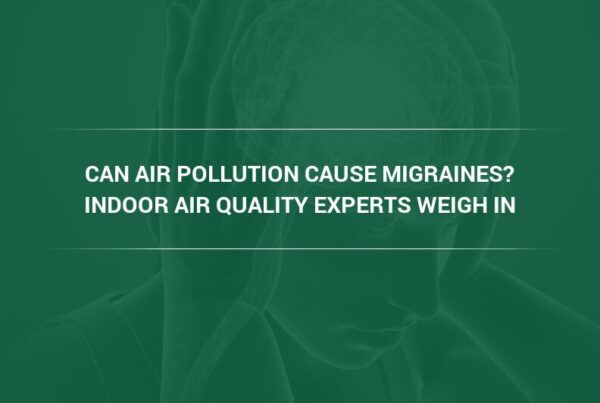It is widely known that exposure to air pollution is linked to a wide array of health issues, and is most frequently associated with lung and heart issues. However, the damage that air pollution may cause extends far beyond the respiratory and cardiovascular systems.
A longitudinal study published in 2022 has found a link between exposure to fine particulate matter (PM2.5) and the risk of chronic kidney disease.
What is PM2.5? Fine Particulate Matter Definition
Fine particulate matter, or PM2.5, is a common pollutant in both indoor and outdoor air and is one of three classifications of particulate matter.
Particulate matter is a broad class of pollutants defined as any solid or liquid particles small and light enough to remain suspended in the air. PM2.5 particles have a diameter of 2.5 microns (micrometers, or one-millionth of a meter) or less and cannot be seen by the naked eye.
While larger particulate matter, such as PM10 (which has a diameter of 10 microns), can usually be filtered out by the respiratory system before entering the lungs and the bloodstream, PM2.5 is too small for these mechanisms to protect against it effectively. As a result, PM2.5 and its smaller counterpart, PM1 (with a diameter of less than one micron), can enter the body and cause damage to organs through the bloodstream.
The Link Between Air Pollution and Chronic Kidney Disease (CKD)
The study was published in the American Journal of Kidney Diseases, the official peer-reviewed journal of the National Kidney Foundation. Researchers used medical record data from 7.3 million patients at the Health Management Center in the Third Xiangya Hospital of Central South University, which is Central China’s largest medical institution.
Of the entire medical record database, 99,960 patients had at least two estimated glomerular filtration rate (eGFR) assessments between 2005 and 2018. eFGR tests measure blood levels of certain chemicals produced by the body to determine how well the kidneys are functioning (filtering out toxins). Higher scores on an eFGR test indicate better kidney function, with a score of 90 or higher representing normal kidney function and a score of less than 15 representing kidney failure.
27,535 of the patients were excluded from the sample because they had already been diagnosed with CKD at the time of the baseline examination, or pollution data was not available for their residence area, or they had a comorbid condition that could affect the function of their kidneys. The median age of the remaining 72,425 patients was 38 with 58% male.
Data from participants’ medical records was analyzed alongside PM2.5 individual exposure estimates based on the residential address provided in each patient’s medical records. Pollution data was extrapolated from the China High Air Pollutants (CHAP) dataset, which uses a combination of ground-based measurements, satellite remote sensing products, atmospheric reanalysis, and model simulations to calculate ambient pollution levels.
Analysis of the data found an association between ambient levels of PM2.5 and poor kidney function. Long-term (ten-year) exposure to particulate matter was shown to have the strongest correlation with kidney disease, while one-year average exposure had a medium correlation.
“In this large cohort study of participants in 121 counties of Hunan, China, we confirmed that higher ambient PM2.5 exposure was associated with an increased risk of developing CKD,” the researchers wrote, “This effect was robust after adjustment for major covariates, and there was a strong positive association between cumulative average PM2.5 and CKD risk, especially when adjusted for other air pollutants such as BC, O3, and NO2. Furthermore, our study found that there is a potential synergistic effect of humidity and PM2.5 on the risk for incident CKD. These findings suggest that reducing the PM2.5 air pollution may yield benefits related to kidney health.”
Air Filtration Combats Pollution-Related Health Risks
As the researchers noted, their methods were unable to account for indoor air pollution exposure. In China, outdoor particulate matter concentrations are approximately six times higher than outdoor particulate matter concentrations in the United States. In the United States, particulate matter concentration is usually two to five times higher than outdoor particulate matter exposure, according to the EPA. Consequently, indoor particulate matter exposure in some areas of the U.S. may be comparable to the exposure levels examined in the study.
Considering most Americans spend 90% or more of their time indoors, indoor particulate matter exposure is a significant health concern.
Camfil’s City M air purifier is an in-room air purification unit that operates independently of the building’s HVAC system to deliver purified air regardless of HVAC system filter capacity. The City M uses Absolute® HEPA filtration to remove 99.995% of particles at the most penetrating particle size from the air.
Find out more about the air filtration solutions that will best fit your home, school, or office building by contacting a Camfil representative.
About Camfil Clean Air Solutions
For more than half a century, Camfil has been helping people breathe cleaner air. As a leading manufacturer of premium clean air solutions, we provide commercial and industrial systems for air filtration and air pollution control that improve worker and equipment productivity, minimize energy use, and benefit human health and the environment. We firmly believe that the best solutions for our customers are the best solutions for our planet, too. That’s why every step of the way – from design to delivery and across the product life cycle – we consider the impact of what we do on people and on the world around us. Through a fresh approach to problem-solving, innovative design, precise process control, and a strong customer focus we aim to conserve more, use less and find better ways – so we can all breathe easier.
The Camfil Group is headquartered in Stockholm, Sweden, and has 31 manufacturing sites, six R&D centers, local sales offices in 35+ countries, and about 5,200 employees and growing. We proudly serve and support customers in a wide variety of industries and in communities across the world. To discover how Camfil USA can help you to protect people, processes and the environment, visit us at www.camfil.us/
##
Media Contact:
Lynne Laake
Camfil USA Air Filters
T: 888.599.6620
E: Lynne.Laake@camfil.com
F: Friend Camfil USA on Facebook
T: Follow Camfil USA on Twitter
Y: Watch Camfil Videos on YouTube
L: Follow our LinkedIn Page
Sources:
https://www.ajkd.org/article/S0272-6386(22)00623-0/fulltext
https://www.ajmc.com/view/study-finds-particulate-matter-exposure-associated-with-incident-ckd



